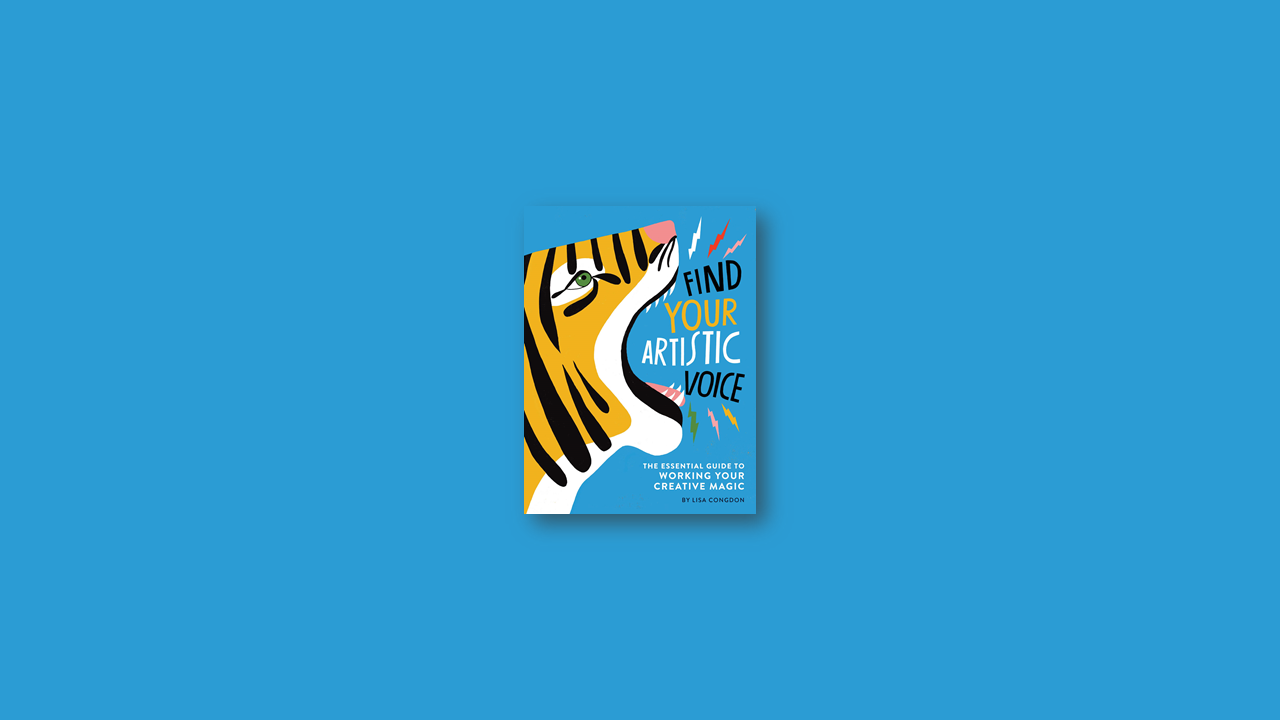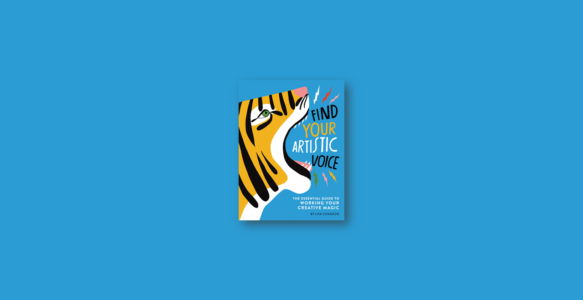While in mainstream culture, idiosyncrasies and differences are often seen as flaws; in our world — the world of artists — they are your strength. They are part of what embody your artistic “voice”: all of the characteristics that make your artwork distinct from the artwork of other artists, like how you use colors or symbols, how you apply lines and patterns, your subject matter choices, and what your work communicates.
What Is an Artistic Voice?
Your artistic voice is your own point of view as an artist. It includes your particular style — things like your own color palette, symbols, lines, and markings — your skill, your subject matter, your medium, and the consistency with which you use all of these things. It reflects your unique perspective, life experience, identity, and values, and it is a reflection of what matters to you.
Finding your voice is one of the most important experiences you will ever have. And the process cannot be rushed. Likewise, it isn’t just something that magically “happens.” Instead, it’s both an exercise in discipline and a process of discovery that allows for — and requires — a lot of experimentation and failure. Most of the time, finding your voice takes years of practice and repetition, frustration, agony, humiliation, and self – doubt.
Strategies for Developing Your Own Voice
Make Art Every Day, Even for a Few Minutes
The most direct route to developing your voice is getting into a routine where you make art every single day. The results will be faster if you engage in periods of focused practice in a particular medium or subject matter.
When it Gets Hard, Don’t Stop—Keep Going
Here’s the thing. As much as it can be enjoyable and relaxing, making art, especially when we engage in it a lot (and aspire to get better at it), can feel ridden with anxiety, tedium, or frustration. This is especially true when we are beginners, when we don’t always have the skills or tools to execute our ideas.
Working through the bottom of the curve is essential to finding your voice. So, get comfortable with feeling frustrated and keep going. It’s part of being an artist.
Embrace the Monotony
Making art can stir up a whole host of uncomfortable feelings, and tedium and boredom are no exception. And that’s because finding your voice requires showing up to practice, but practice often involves doing the same thing over and over and over. Finding ways to honor, appreciate, and enjoy the tedious aspects of your work will help you enormously in your path.
Go Outside into the World and be Mindful of what you See
One of the best ways to find inspiration and discover new possibilities for things like subject matter, color, or pattern in your work is to go out into the world and pay attention. Most of the time when we’re outside of our home or studio, our focus is on getting somewhere — to the grocery store, to pick up our kid at school, or to go to the post office to drop off packages. So while we might notice a few things that intrigue us, we typically don’t actually see and absorb much because we’re on a familiar route and we’re simply processing our day or making a mental notice about what we have to do next.
Find a Space to be Alone to Create
Many artists, even those who are extroverts, like to work alone. “The creative act is a process that often unfolds in solitary reflection,” write Kaufman and Gregoire. “The trope of the reclusive writer and the introverted artist stems from a significant truth of creativity. In order to make art, we must find the space to become intimate with our own minds.” In order for the creative process to expand, we get into our own worlds where there is less chance for interruption or the fear of judgment from others.
Find a Feedback Partner or Form a Critique Group
One of the best ways you can bolster the development of your voice is to talk to other artists about your work and invite their feedback.
When you form a feedback group, always start first by forging an environment of mutual respect through norms of healthy and considerate communication so that the sessions feel productive and don’t leave you feeling worse about your work or without a sense of how to move forward.
Take Classes
Like joining a feedback group, taking classes, especially classes that stretch your skills or introduce you to new media, will almost always advance the development of your creative voice. Many artists and most colleges and community centers offer art classes to the general public.
Brainstorm
The essential part of brainstorming is to write down everything that comes into your mind without any filters, and not to break up the process with analysis about whether an idea will work or won’t or whether something is a good idea or not. You can eventually narrow down your lists as a second step, or regroup items in a new list, but most brainstorms should be a free flow of ideas. Once you tell your brain, “Stop! That idea won’t work,” your brain will also begin to filter other potentially good ideas as bad ideas. Remember, it’s just a list, not anything you have to act on right away.
Develop your Vocabulary and Become an Expert
Vocabulary doesn’t literally mean your vocabulary of words. It means your vocabulary of interests, knowledge, and ideas. We develop our vocabulary by going deep into learning and exploring the world — reading books and magazines, watching films, listening to podcasts, looking at art, traveling, and meeting new people. Through those experiences, you want to look for what speaks to you. Then, dive in and become an expert in those things that are inspiring or interesting.
Get Out to Support and Learn from other Artists
Your journey as an artist will rest on the backs of other artists who have paved the way before you. Likewise, you will be paving the way for artists who come after you. Our ability to thrive creatively depends on the generosity we offer each other — in sharing knowledge and skills, resources and strategies. One of the best ways to benefit from what other artists have to offer you is getting out and supporting them.
Stay Open to all Experiences
One of the key ingredients in stimulating creativity and in developing your artistic voice is what researchers Kaufman and Gregoire call “openness to experience.” When we are open to experiencing and engaging with life fully, both the light and dark, and when we think in terms of possibility, even in challenging circumstances, our capacity for creative thinking is boundless. New experiences become the material integral to your artistic voice. Openness to experience is the “strongest and most consistent personality trait that predicts creative achievement.” Openness is essential to creativity.
Think Like a Beginner
“In the beginner’s mind there are many possibilities, but in the expert’s there are few,” wrote Zen master Suzuki Roshi. One of the best ways to stay open to experiences is to think like a beginner. When you adopt a beginner’s mind, there are an unlimited number of possibilities available to you. Conversely, when you consider yourself educated and experienced (aka knowing everything), you see fewer possibilities.
Remember, you are the Boss of your work and How you Make It
One of the things that hinders artists the most is the fear of “doing it wrong.” Regardless of what anyone has ever told you, one of the greatest things about being an artist is that there is no “right” or “wrong” way to make anything. Sure, in some cases, some techniques are speedier and sometimes clients prefer things submitted in a certain format. Depending on your professional goals, you should pay attention to those kinds of guidelines. But for the most part, you get to invent your own process and your own set of rules for how you use your media and what you create, even if it means throwing away everything you ever learned in art school and making things up as you go.
Now It’s Your Turn
“Every artist was first an amateur,” wrote Ralph Waldo Emerson.
Developing an artistic voice is not a miraculous process reserved only for a few innately talented people. Every single person who chooses to embark on a creative path has to work at it. The unfolding of your voice requires showing up and working hard. It requires being willing to create failures, to ask for feedback, and to go back and try all over again. It requires staying open. It requires moving outside what’s comfortable and being vulnerable.


